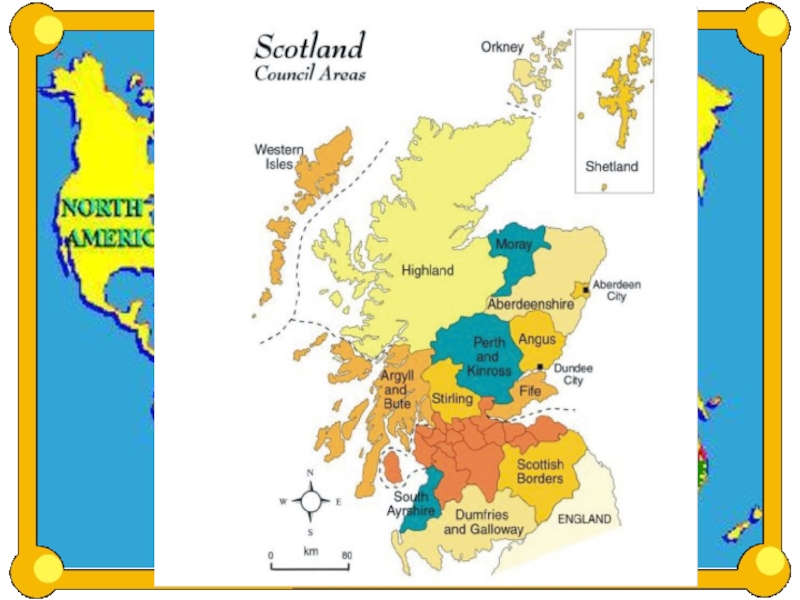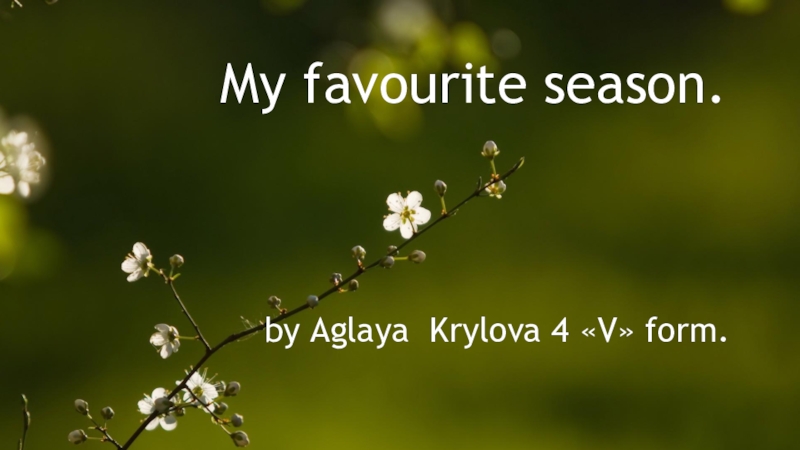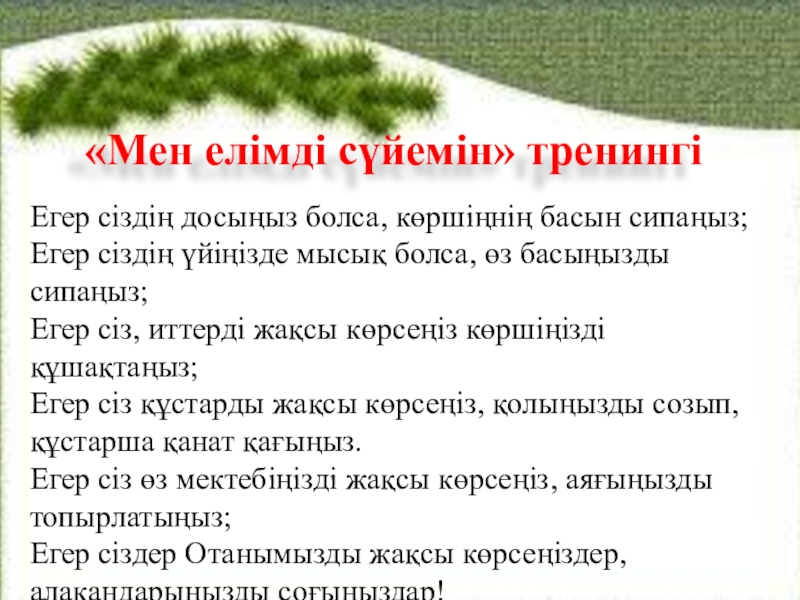- Главная
- Разное
- Образование
- Спорт
- Естествознание
- Природоведение
- Религиоведение
- Французский язык
- Черчение
- Английский язык
- Астрономия
- Алгебра
- Биология
- География
- Геометрия
- Детские презентации
- Информатика
- История
- Литература
- Математика
- Музыка
- МХК
- Немецкий язык
- ОБЖ
- Обществознание
- Окружающий мир
- Педагогика
- Русский язык
- Технология
- Физика
- Философия
- Химия
- Шаблоны, фоны, картинки для презентаций
- Экология
- Экономика
Презентация, доклад на тему Vitamins. The Compound and complex sentences – Дәрумендер. Салалас құрмалас және сабақтас құрмалас сөйлем
Содержание
- 1. Vitamins. The Compound and complex sentences – Дәрумендер. Салалас құрмалас және сабақтас құрмалас сөйлем
- 2. THE RULESA simple sentence consists of one
- 3. COMPOUND SENTENCESThey have two complete sentences that
- 4. THE RULESA complex sentence consists of an
- 5. Simple Sentences Here are some examplesMy dog
- 6. Compound Sentences A compound sentence is usually
- 7. There are many connectives that can be used in compound sentences BecauseButWhen Therefore And AlthoughAfter WhileSinceUntilWhere
- 8. But Be CAREFUL!!!
- 9. Complex Sentences A complex sentence is similar
- 10. Exercise 2. Determine Simple, Compound or Complex
- 11. Exercise 3. Combine the following simple sentences
- 12. Exercise 1. Translate the sentences and determine
- 13. CHARACTERISTICS OF VITAMINS Vitamins are micronutrientsVery
- 14. FAT SOLUBLE VITAMINS VS. WATER SOLUBLE VITAMINS
- 15. FAT-SOLUBLE VITAMINSA, D, E, K
- 16. FAT-SOLUBLE VITAMINSfound in fats and oilsrequire bile
- 17. VITAMIN A3 forms in the bodyretinolretinalretinoic acidcollectively
- 18. VITAMIN Aprecursor: beta-carotenederived from plant foodscan split and form retinol in intestine and liver
- 19. VITAMIN A FUNCTION visionmaintain epithelial tissue and skinsupport reproduction and growthImmune systemBone development
- 20. VITAMIN Adeficiencyinfectious diseasepneumonia, measles, diarrheakeratinizationdry, rough, scaly skinnight blindness
- 21. Vitamin A SourcesBeta-caroteneDark leafy green vegetables, spinach,
- 22. RetinolFortified milk, butter cheese, creamFortified margarineEggsLiver
- 23. VITAMIN Dbody can makefrom sunlightprecursor made from cholesterolproduction occurs in liver and kidneydiseases can affect activation
- 24. FUNCTION VITAMIN Dpart of the
- 25. VITAMIN D sourcesfortified food:
- 26. VITAMIN Eantioxidantdefender against free radicalspolyunsaturated fatty acidsmay reduce the risk of heart diseasedeficienciesrareerythrocyte hemolysis
- 27. VITAMIN Ewidespread in foodeasily destroyed by heat processing
- 28. VITAMIN Kaids in blood clotting andbone mineralizationdeficiency
- 29. liver is also high in vitamin K
- 30. WATER-SOLUBLE VITAMINSB complex , c
- 31. WATER SOLUBLE VITAMINSThe B-complex vitamins are often
- 32. B COMPLEX VITAMINSCo-enzymes (activate enzymes)Found in the
- 33. Thiamin (B1)Riboflavin (B2)Niacin (B3)Pantothenic AcidBiotinPyridoxine (B6)FolateVitamin B-12B COMPLEX VITAMINS
- 34. B COMPLEX PRIMARY FUNCTIONSEnergy metabolismThiamin (B-1), Riboflavin
- 35. VITAMIN CSynthesized by most animals (not by humans)Decrease absorption with high intakesExcess excreted
- 36. FUNCTIONS OF VITAMIN CReducing agent (antioxidant)Iron absorption
- 37. VITAMIN C DEFICIENCY: HISTORY OF SCURVYVitamin C
- 38. DEFICIENCY OF VITAMIN CScurvyDeficient diet for 20-40
- 39. FOOD SOURCES OF VITAMIN CCitrus fruitPotatoGreen pepperCauliflowerBroccoliStrawberryRomaine
Слайд 1VITAMINS. THE COMPOUND AND COMPLEX SENTENCES – ДӘРУМЕНДЕР. САЛАЛАС ҚҰРМАЛАС ЖӘНЕ САБАҚТАС
Слайд 2THE RULES
A simple sentence consists of one independent clause. An independent
During the game, Jasmine scored 23 points, had 6 assists, 8 rebounds, and 2 blocked shots.
Tim is a really good pitcher and hitter.
Слайд 3COMPOUND SENTENCES
They have two complete sentences that can stand on their
The key is to find one of the FANBOYS with a comma before it and a complete sentence on both sides of the FANBOYS.
It may also be identified by having a semi-colon without FANBOYS joining the two sentences.
Слайд 4THE RULES
A complex sentence consists of an independent clause and one
I would really love my English class if we didn’t have to do so much writing.
Слайд 5
Simple Sentences
Here are some examples
My dog is small.
I hate sprouts.
I am 10 years old.
I live in Stonham Aspal.
Simple sentences have 1 clause. Most simple sentences have a subject and a predicate.
E.g. My dog is small.
Subject = dog
Predicate = It is small.
Слайд 6Compound Sentences
A compound sentence is usually made from 2 or
My dog is not popular with the neighbours.
It scares the postman away.
Becomes
My dog is not popular with the neighbours it scares the postman away.
because
Слайд 7There are many connectives that can be used in compound sentences
Because
But
When
Therefore
And
Although
After
While
Since
Until
Where
Слайд 8But Be CAREFUL!!!
DO NOT
over and over again
It’s better to mix and match
Слайд 9
Complex Sentences
A complex sentence is similar to a compound sentence,
E.g. The dinner was burned because she had forgotten it.
Clause 1
Connective
Clause 2
Clause 2 does not make sense on its own, without clause 1 = complex sentence.
Слайд 10
Exercise 2. Determine Simple, Compound or Complex Sentences
1. Their practice field
2. The training rooms of these college athletes smell of grease and gasoline.
3. Their tools are screwdrivers and spanners rather than basketballs and footballs.
4. This new brand of college athlete is involved in the sport of auto racing.
5. Although the sport is new, it has already attracted six collegiate teams in the Southeast.
6. The students work on special cars designed for their sport.
Слайд 11Exercise 3. Combine the following simple sentences to create a compound
1.It rained for three days. The streets in my neighborhood flooded.
It rained for three days, so the streets in my neighborhood flooded.
2.I got to ball practice late. I forgot to set my alarm.
3.Kyle completed his homework. He put it in his binder.
4.Luke mowed the lawn. He earned ten dollars.
5.I stayed up late last night. I am tired today.
6.Neil doesn't like seafood. He doesn't like cabbage.
7.My pencil was broken. I borrowed one from Jake.
8.I like apples. I like pears more.
Слайд 12Exercise 1. Translate the sentences and determine whether they are compound
1. Jason decided to stay up late because he had a lot of homework to do.
2.If you hurry, we might get to school on time.
3.Although Monica had a cold, she went to school because she had a test.
4.While washing the car, Todd slipped on the soap and he fell.
5.Dad takes the train to work even though he has a car.
6.Molly baked brownies since she had nothing else to do.
7. Frank had a good sense of humor, so he laughed a lot.
Слайд 13
CHARACTERISTICS OF VITAMINS
Vitamins are micronutrients
Very small amounts are needed by the
Very small amounts are contained in foods.
Vitamins are essential.
The roles they play in the body are very important.
Most vitamins are obtained from the foods we eat.
Some are made by bacteria in the intestine
There is no perfect food that contains all the vitamins in the right amount.
Vitamins are non-energy producing
They do not contain kcalories.
Vitamins are classified according to how soluble they are in fat or water.
Слайд 16FAT-SOLUBLE VITAMINS
found in fats and oils
require bile for absorption
enter the lymph,
held and stored in fatty tissues
Needed in small amounts
may reach toxic levels
not readily excreted
Слайд 17VITAMIN A
3 forms in the body
retinol
retinal
retinoic acid
collectively known as retinoids
Retinol, the
Retinal, the aldehyde form
Retinoic acid, the acid form
Beta-carotene, a precursor
Cleavage at this point can
yield two molecules of vitamin A*
Слайд 18VITAMIN A
precursor: beta-carotene
derived from plant foods
can split and form retinol in
Слайд 19VITAMIN A FUNCTION
vision
maintain epithelial tissue and skin
support reproduction and growth
Immune
Bone development
Слайд 20VITAMIN A
deficiency
infectious disease
pneumonia, measles, diarrhea
keratinization
dry, rough, scaly skin
night blindness
Слайд 21Vitamin A Sources
Beta-carotene
Dark leafy green vegetables, spinach, broccoli
Deep orange veggies
Carrots, pumpkin,
Deep orange fruits
Apricots, cantaloupe
Слайд 23VITAMIN D
body can make
from sunlight
precursor made from
cholesterol
production occurs in liver
diseases can affect activation
Слайд 24 FUNCTION VITAMIN D
part of the bone-making/maintenance team
maintains blood concentrations
Mineralization of bones
raises blood calcium and phosphorus by increasing absorption from digestive tract
withdrawing calcium from bones
stimulating retention by kidneys
deficiencies
ultimately creates a calcium deficiency
rickets, osteomalacia
Слайд 25VITAMIN D
sources
fortified food: milk, margarine, cereals, beef,
sun
storage from the summer does not last the winter
Слайд 26VITAMIN E
antioxidant
defender against free radicals
polyunsaturated fatty acids
may reduce the risk of
deficiencies
rare
erythrocyte hemolysis
Слайд 28VITAMIN K
aids in blood clotting and
bone mineralization
deficiency causes hemorrhagic disease
sources
made by
absorbed and stored in liver
Слайд 31WATER SOLUBLE VITAMINS
The B-complex vitamins are often associated with giving a
Since these vitamins are water soluble, they are not stored in the body like fat soluble vitamins. They dissolve in water and are excreted from the body in urine. Therefore, it is important to consume foods rich in these vitamins each day in order to fulfill the body’s need.
Слайд 32B COMPLEX VITAMINS
Co-enzymes (activate enzymes)
Found in the same foods
Single deficiency rare
Act
Metabolic pathways used by protein, carbohydrate, and fat
Слайд 33Thiamin (B1)
Riboflavin (B2)
Niacin (B3)
Pantothenic Acid
Biotin
Pyridoxine (B6)
Folate
Vitamin B-12
B COMPLEX VITAMINS
Слайд 34B COMPLEX PRIMARY FUNCTIONS
Energy metabolism
Thiamin (B-1), Riboflavin (B-2), Niacin (B-3), Pyridoxine
Red blood cell synthesis
Folate, B12
Homocysteine metabolism
Folate, B12, B6
Слайд 35VITAMIN C
Synthesized by most animals (not by humans)
Decrease absorption with high
Excess excreted
Слайд 36FUNCTIONS OF VITAMIN C
Reducing agent (antioxidant)
Iron absorption (enhances)
Synthesis of collagen
Immune functions
Does
Wound healing
Слайд 37VITAMIN C DEFICIENCY: HISTORY OF SCURVY
Vitamin C (ascorbic acid) deficiency leads
Слайд 38DEFICIENCY OF VITAMIN C
Scurvy
Deficient diet for 20-40 days
Fatigue, pinpoint hemorrhages
Bleeding
Associated with poverty; macrobiotic diet
Слайд 39FOOD SOURCES OF VITAMIN C
Citrus fruit
Potato
Green pepper
Cauliflower
Broccoli
Strawberry
Romaine lettuce
Spinach
Easily lost through cooking
Sensitive
Sensitive to iron, copper, oxygen












































